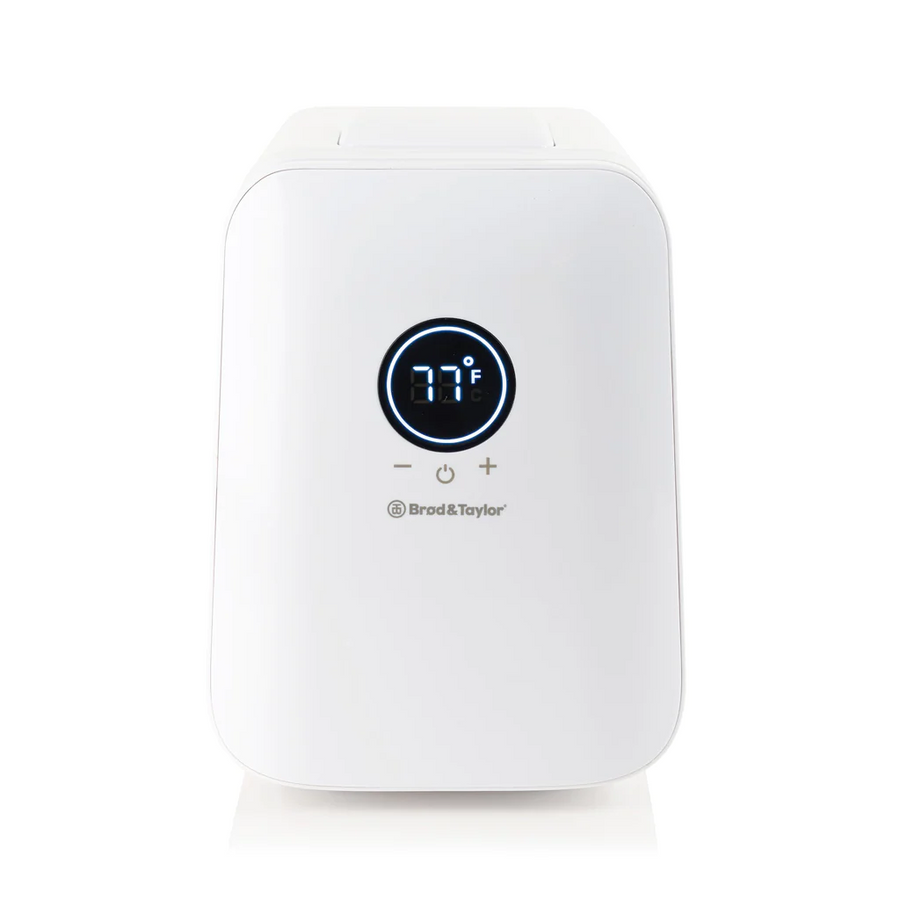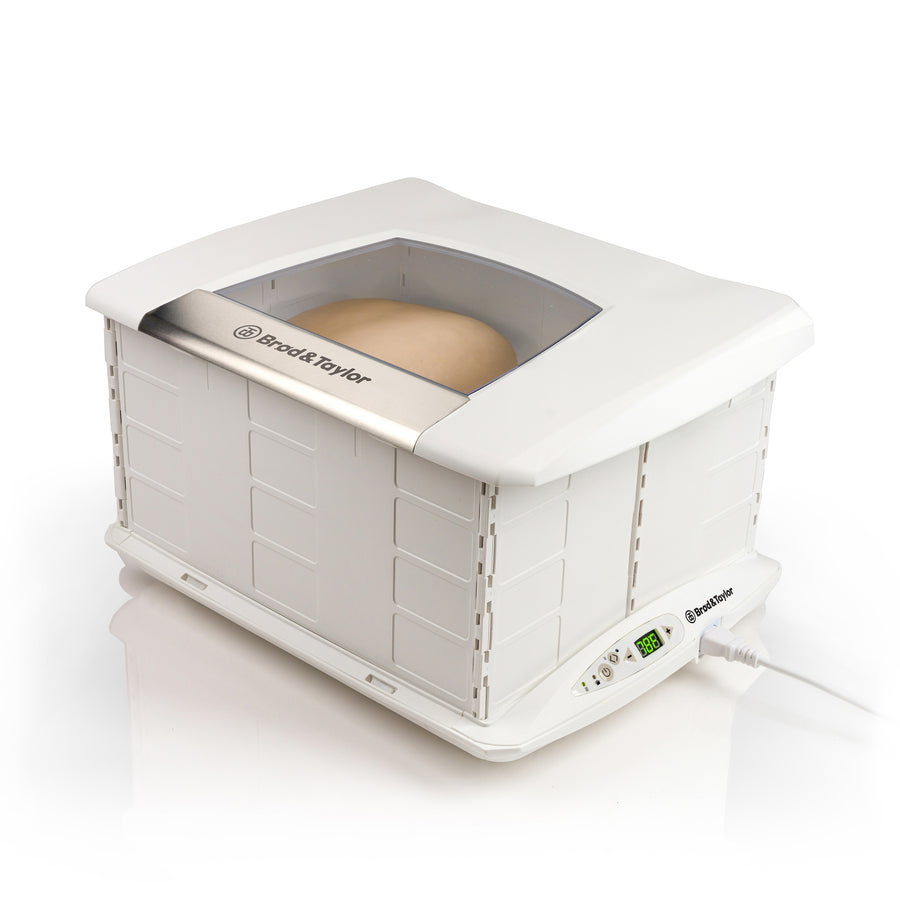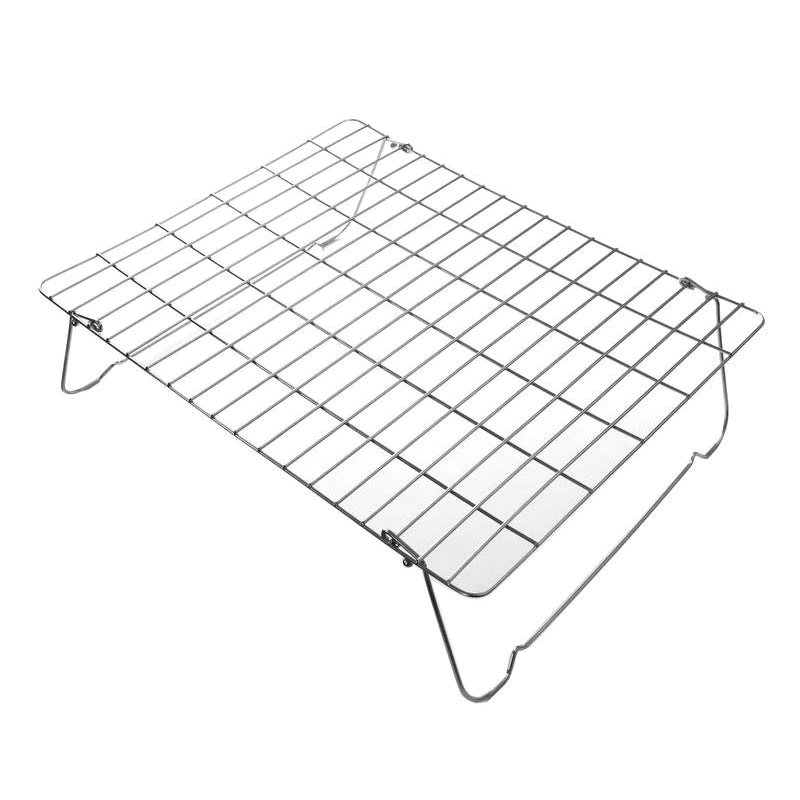Brod & Taylor Sourdough Home SH-100
The Brod & Taylor Sourdough Home SH-100 is designed for sourdough enthusiasts, providing a stable temperature environment to keep your starter active and healthy. By maintaining your chosen temperature, whether warm or cool, it reduces feedings, minimizes discard, and ensures your starter is always ready for your baking schedule.
Product Features:
- Precise temperature control, heats or cools to keep starter active
- Reduces feeding frequency and flour waste
- Compact design, saves kitchen space
- Accommodates starter jars up to 1 liter (1 quart)
- Wide temperature range: 5-50°C (41-122°F)
- Provides a stable fermentation environment year-round
Patent Pending
Limited Stock Available
| Temperature Range | 41-122F / 5-50C |
| Outside Dimensions | 11in H x 8 W x 10 D (28 x 23 x 25cm) |
| Inside Dimensions | 7½in H x 5⅛ W x 5 ½ D (19 x 13 x 14 cm) |
| Weight | 4.1 lbs, 1.86 kg |
| Voltage | 100-240V |
| Efficiency | To maintain a stable temperature, the Sourdough Home constantly adjusts the heating or cooling power. Temperature settings close to the ambient room temperature will require a very small amount of power, while temperature settings significantly above or below room temperature will require more power. |
| Maximum Power Usage | Maximum power in cooling mode: 38W – maximum power in heating mode: 20W. |
| Sourdough Starter Jar | Sold Separately |
Cleaning and Maintenance:
- Please wipe the product surface with a soft, damp cloth.
- Do not immerse the product in water or other liquids.
- Regularly clean the interior to maintain hygiene.
- When not in use, ensure the product is completely dry before storing.
Usage Precautions:
- Please read the instruction manual carefully before use.
- Do not use this product in humid environments.
- Do not block the ventilation openings.
- Keep the product away from children and pets.
The Sourdough Home maintains your starter at a consistent temperature so you can reduce feedings, minimize discard, and bake on your own schedule. It eliminates temperature fluctuations, simplifies maintenance, and gives you flexibility with feeding frequency.
Nope! That’s one of the best things about the Sourdough Home. By lowering the temperature, you can slow fermentation and feed your starter every 2, 3, or even 5 days. No need to stick to a rigid schedule or waste flour. It’s sourdough—on your terms.
Yes. Because you’re feeding less often, you’ll naturally create less discard. Many bakers find this to be one of the most satisfying benefits of using the Sourdough Home.
Absolutely. Just set the Sourdough Home to a warmer temperature (around 76–78°F / 24–26°C) to keep your starter active and ready to use daily.
You can—but fridge temperatures are usually too cold (around 38°F / 3°C). That often weakens your starter and requires extra feedings to revive it. The Sourdough Home keeps your starter cool but still active, so it’s healthier and ready to bake with when you are.
The Sourdough Home heats and cools, while the Folding Proofer only heats. That means the Sourdough Home can hold your starter below room temperature to slow fermentation. It’s also more compact and designed specifically for starter jars up to 1 liter (1 quart). The Folding Proofer is larger and better suited for proofing dough or bulk fermentation.
The Sourdough Home fits jars up to 1 liter (1 quart). It works with most standard glass jars, including Weck and Ball. Want the perfect fit? Check out our Sourdough Starter Jar
Yes! The Sourdough Home works with all types of starters—gluten-free, rye, whole wheat, and more. Temperature is key, no matter what flour you use.
Not at all. Just set your desired temperature and let it run. The Sourdough Home maintains a stable environment with no babysitting required.
The time to reach the set temperature depends on the amount of starter and its initial temperature. To speed things up, feed your starter with water close to your set temperature (warm or cool, depending on the target). The Sourdough Home is a low-power unit, so plan for slower transitions, especially for big temperature changes.
The Sourdough Home is designed to keep your starter within an optimal range—within 1–3°F of the set point. That slight variance is normal and doesn’t affect performance. What matters more than the exact number is how your starter behaves: is it rising well? Bubbling? Smelling pleasantly sour? If yes, then your starter is thriving—even if the thermometer shows a small difference.
Use a digital probe thermometer inserted directly into the starter after it’s been in the unit for a few hours. Measuring the air inside won’t give you an accurate reading.
Anywhere with stable room temperature works—like a kitchen counter. Avoid placing it next to ovens or in direct sunlight, and allow a few inches behind the unit for airflow.

Brod & Taylor Sourdough Home SH-100
Your Sourdough, Your Temperature, Year-Round.
The Brod & Taylor Sourdough Home is designed for sourdough enthusiasts who seek ultimate flavor. With its precise temperature control and integrated design, you can easily maintain an active and healthy sourdough starter wherever you are, providing an unparalleled baking experience.

Precise Temperature Control
The Sourdough Home precisely heats or cools, keeping your sourdough at the ideal temperature, ensuring it stays active and healthy regardless of the ambient room conditions.

Stable Environment for Starter
Provides a stable temperature environment, reducing feeding frequency and discard, and ensuring your starter is always ready for your baking schedule.

Compact and Space-Saving Design
With outside dimensions of 11in H x 8in W x 10in D (28 x 23 x 25cm), the Sourdough Home is compact enough to fit comfortably on your kitchen counter.

Year-Round Sourdough Success
The Sourdough Home provides a stable fermentation environment year-round, ensuring your sourdough remains in optimal condition regardless of seasonal changes, always ready for your baking needs.


































